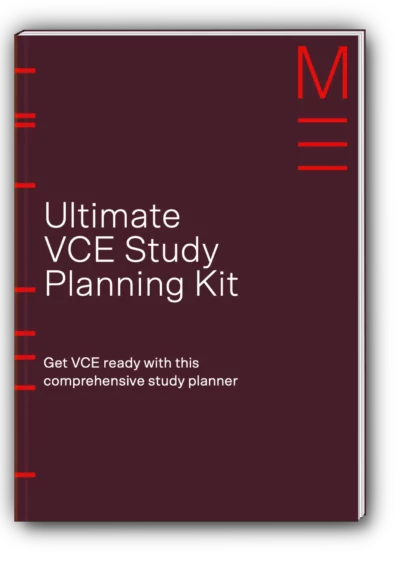Welcome to Matrix Education
To ensure we are showing you the most relevant content, please select your location below.
Select a year to see courses
Learn online or on-campus during the term or school holidays
Learn online or on-campus during the term or school holidays
Learn online or on-campus during the term or school holidays
Learn online or on-campus during the term or school holidays
Learn online or on-campus during the term or school holidays
Learn online or on-campus during the term or school holidays
Learn online or on-campus during the term or school holidays
Get HSC Trial exam ready in just a week
Get HSC exam ready in just a week
Select a year to see available courses
Science guides to help you get ahead
Science guides to help you get ahead
Want to prepare effectively for the VCE English exam Section C: Language Analysis? Our guide breaks everything down, helping you prepare a high-scoring analytical response.

Join 75,893 students who already have a head start.
"*" indicates required fields
Related courses

Join 8000+ students each term who already have a head start on their school academic journey.
In the VCE English exam, Section C: Analysis of Argument and Language, has always been one of the most challenging sections for many students.
In Section C, you need to read an unseen persuasive text and answer a question about its central argument. Your job is to analyse how the writer constructs their argument and uses language to persuade their audience.
According to the VCE study design, you need to understand the structure of the argument and evaluate how effectively it supports the author’s main idea.
Before reading on, make sure you’ve read how to ace Section A and Section B of the VCE English exam.
Here’s our step-by-step guide to preparing for Section C:
What is a persuasive text? How does the writer construct an argument to persuade? These are concepts you need to know to succeed in this section.
Persuasive text: a text where the writer tries to convince their audience to adopt a certain opinion or way of thinking about an issue.
You will analyse how the writer constructs the argument and uses language to persuade their audience. Ultimately, you need to decide (evaluate) whether the writer successfully persuades the audience to adopt their position.
To do well in VCE English Section C, your analytical response needs to:
Download our free VCE English Section C Annotated Analysis.
An annotated high-scoring essay. Fill out your details below to get this resource emailed to you. "*" indicates required fields
Free VCE English Section C Annotated Analysis Download

Free VCE English Section C Annotated Analysis Download
To score highly in Section C, you must show an understanding of the writer’s contention, how they build their argument, and how they express their point of view.
You’ll also need to examine how the writer uses language to convince their audience.
The unseen persuasive text includes written text and visual elements such as cartoons, infographics and other images. Your response must show how written and visual language work together to persuade.
Tip: Always start by clearly stating the writer’s contention, purpose and audience. Analyse the structure of the argument before analysing specific persuasive techniques.
To succeed in Section C, you must show you understand how argument(s) support the contention or conclusion. The basic structure of an argument is shown below:
In Section C, you must identify the persuasive techniques and explain how they contribute to the overall effectiveness of the argument. Some common rhetorical and persuasive language techniques include:
To excel in Section C, try to analyse structures and language of rhetoric, argumentation, reasoning and persuasion.
The classical model of rhetoric, created by the Greek philosopher Aristotle, consists of three rhetorical appeals. Let’s look at each of them:
To persuade their audience, a writer must establish their reputation and convey a sense of goodwill.
A writer may use definitions, make inferences, and illustrate an argument with evidence.
The writer will use language to evoke an emotion or an image in the audience’s mind. This leaves them with a lasting memory of the main argument.
Your introduction should give a clear and concise overview of the persuasive text. Make sure to include:
To identify the writer’s contention, purpose and audience, ask the following questions:
Each body paragraph should focus on a specific argument structure or persuasive technique element. Here’s how to organise them:
Summarise your analysis.
Even high-performing students make common mistakes in VCE Language Analysis. Watch out for these common errors:
Section C of the VCE English exam is all about digging deep into how arguments are constructed and how persuasive techniques work together.
By practising analysis of persuasive texts regularly, focusing on how contention, evidence, and appeals work together, and avoiding common mistakes, you will be well-prepared to tackle Section C of the VCE English exam with confidence.
Get VCE ready with this comprehensive study planner. Fill out your details below to get this resource emailed to you. "*" indicates required fields
Free VCE Study Planning Kit Download

Free VCE Study Planning Kit Download
Written by Matrix Education
Matrix is Sydney's No.1 High School Tuition provider. Come read our blog regularly for study hacks, subject breakdowns, and all the other academic insights you need.© Matrix Education and www.matrix.edu.au, 2025. Unauthorised use and/or duplication of this material without express and written permission from this site’s author and/or owner is strictly prohibited. Excerpts and links may be used, provided that full and clear credit is given to Matrix Education and www.matrix.edu.au with appropriate and specific direction to the original content.